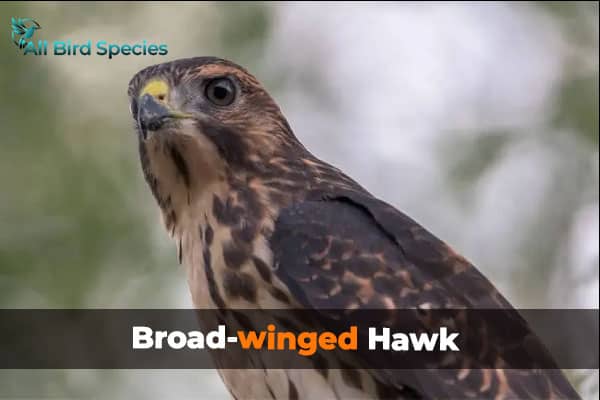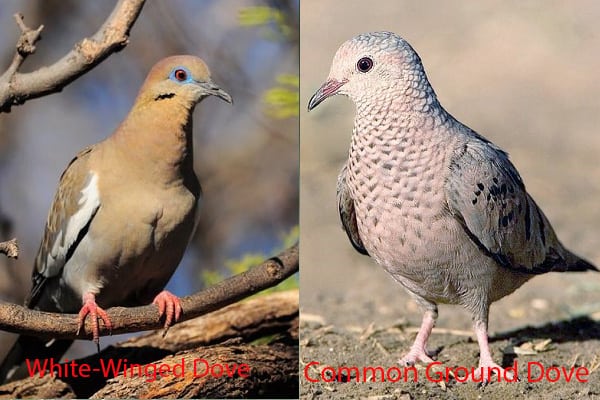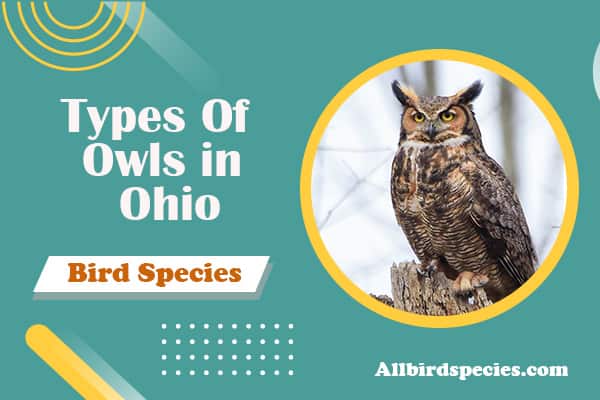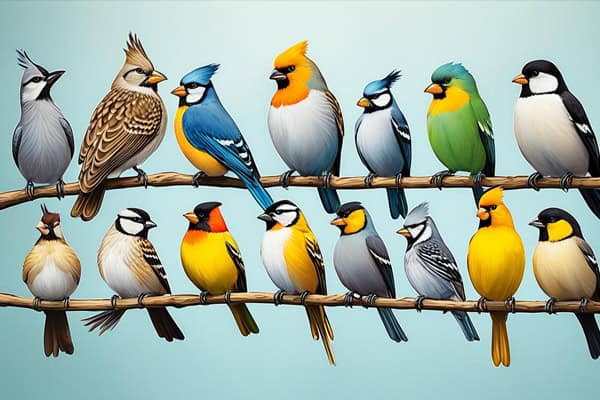6 Types of Hawks in North Carolina (With Pictures)
Did you know North Carolina is home to over 10 different types of hawks? These birds of prey are key to our ecosystems, keeping wildlife balanced. This article will show you six types of hawks in North Carolina, each with its beauty and traits. They all add to the state’s bird diversity, from the famous Red-Tailed Hawk to the quick Sharp-Shinned Hawk.
Knowing about these hawks will make it more exciting when you go birdwatching in North Carolina. You’ll learn about their lives and how to spot them in the wild. Get ready for an adventure into the world of these amazing birds.
Introduction to Hawks in North Carolina
Hawks are a key part of North Carolina’s wildlife, adding to the state’s rich ecosystem. They live in various places, from the coastal plains to the Blue Ridge Mountains. These birds help keep the rodent and bird populations in check, showing their important role in nature.
Birdwatching in North Carolina is exciting. You can see these birds flying high or sitting in trees, looking for food. The state is great for birdwatching because of its many types of hawks, both those that live here all year and those that visit seasonally.
Learning about hawks, like where they live and what they do, makes birdwatching in North Carolina better. It’s great whether you love birds or are just getting started. Knowing what to look for and where to find it makes your time outdoors more enjoyable.
1. Red-Tailed Hawk
- Scientific name: Buteo jamaicensis
- Life span: 10-15 years
- Size: 19.7-25.6 in
- Weight: 31.8-51.5 oz
- Wingspan: 44.9-52.4 in
- State status: Breeding and common
The Red-Tailed Hawk, known scientifically as Buteo jamaicensis, is a well-known bird of prey in North America. It stands out with its striking looks and lives in many places. This makes it a favorite among bird lovers and those who just enjoy watching birds.

Identification and Characteristics
Identifying a Red-Tailed Hawk is easy with its reddish tail and dark brown top. The belly is pale with dark spots. Both males and females look similar, but females are bigger. They have a wide wingspan, making them one of the biggest hawks in North America.
Habitat and Nesting
Red-tailed hawks live in many places, from forests to cities. They can adapt to different environments. They build big nests, or eyries, high up in trees or cliffs. This keeps their nests safe from predators.
Diet and Hunting Behavior
These hawks eat small mammals, birds, and reptiles. They hunt by soaring and diving from high places. This shows how important they are as top predators in their habitats.
Conservation Status
Red-tailed hawks faced threats like habitat loss and human impact, which hurt their numbers. But thanks to conservation efforts, their populations have bounced back. Now, they are classified as Least Concern, showing they’re doing well in North Carolina and other places.
| Feature | Details |
|---|---|
| Scientific Name | Buteo jamaicensis |
| Wingspan | 44.9 to 52.4 inches |
| Diet | Small mammals, birds, reptiles |
| Nesting | Large stick nests in trees or cliffs |
| Conservation Status | Least Concern |
2. Cooper’s Hawk
- Scientific name: Accipiter cooperii
- Life span: 12 years
- Size: 14.6-15.3 in
- Weight: 7.8-14.5 oz
- Wingspan: 24.4-35.4 in
- State status: Migratory and common
The Cooper’s Hawk, known as Accipiter cooperii, is a medium-sized raptor with striking features. It’s known for its adaptability and brightens any backyard with its presence. Learning about its traits and behaviors can deepen your appreciation for this agile hunter.

Physical Traits
One key feature of the Cooper’s Hawk is its blue-gray back and orange chest bars. Adults have a wingspan of 24.4 to 35.4 inches and round tails. These traits help them move through trees and catch prey in mid-air.
Behavioral Adaptability
Cooper’s Hawks are adaptable birds that visit backyard feeders. They thrive in various environments, even in cities. Their stealth lets them sneak up on prey, making them successful hunters in different settings.
Hunting Techniques and Prey
Cooper’s Hawks mainly hunt doves, sparrows, and small mammals. They use speed and agility to catch their prey off guard. Their hunting methods include using cover to sneak up on birds at feeders, ensuring they catch their prey efficiently.
Range and Migration
Cooper’s Hawks have a wide range across North America but don’t breed in North Carolina. They visit as migratory birds. During migration, they move south to escape harsh winter weather. This shows their ability to adapt to different climates and habitats.
| Feature | Description |
|---|---|
| Scientific Name | Accipiter cooperii |
| Wingspan | 24.4 to 35.4 inches |
| Main Diet | Doves, sparrows, small mammals |
| Habitat | Forests, urban areas, backyard feeders |
| Migration | Seasonal southward movement |
Hawks in other Regions:
3. Sharp-Shinned Hawk
- Scientific name: Accipiter striatus
- Life span: 5 years
- Size: 9.4-13.4 in
- Weight: 3.1-7.7 oz
- Wingspan: 16.9-22.1 in
- State status: Migratory and common
The Sharp-Shinned Hawk, known as the Accipiter striatus, is a bird with unique features and behaviors. It is small in size but has amazing hunting skills. This makes it a fascinating hawk in North Carolina.

Size and Appearance
This hawk is the smallest in the region, measuring 9.4 to 13.4 inches. You can spot them by their blue-gray feathers and orange chest bars. They also have a square-tipped tail. These traits help them blend in while hunting in dense woods.
Hunting Strategy
Sharp-shinned hawks are known for their speed and agility. They hunt in thick woods, surprising small birds. Their small size and quick moves make them great at catching prey. Watch them perform acrobatic moves as they chase their food.
Breeding and Lifecycle
Sharp-skinned hawks don’t breed in North Carolina, but their habits are interesting. They build nests high up in trees for safety. They focus on protecting their young, teaching them how to survive.
| Characteristic | Description |
|---|---|
| Scientific Name | Accipiter striatus |
| Bird Size | 9.4 to 13.4 inches in length |
| Appearance | Blue-gray upperparts, orange barring on the chest, square-tipped tail |
| Hunting Technique | Ambush small birds using agility and speed |
| Nesting | Compact nests in tree canopies, emphasize safety |
4. Broad-Winged Hawk
- Scientific name: Buteo platypterus
- Life span: 12 years
- Size: 13.4-17.3 in
- Weight: 9.3-19.8 oz
- Wingspan: 31.9-39.4 in
- State status: Breeding and common
The Broad-Winged Hawk, known as Buteo platypterus, has features that make it stand out. It has a stocky body, 13.4 to 17.3 inches long, with a pale belly and dark bars. Both males and females look alike, making them hard to tell apart.

Distinctive Features
This hawk is known for its strong build and broad wings. Its wings are short but powerful, perfect for quick flight moves. Their size and feather patterns make them easy to spot in the sky.
Migration Patterns
The Broad-winged Hawk migration is amazing to see. They fly in large groups, called “kettles.” In the fall, they head south for the winter. North Carolina is a key stopover point, offering birdwatchers a chance to see these hawks up close.
Feeding Habits
These hawks eat small mammals, reptiles, and insects. They can hunt in many places thanks to their varied diet. They spot prey from high above and dive down to catch it, showing off their hunting skills.
5. Northern Harrier
- Scientific name: Circus hudsonius
- Life span: Up to 12 years
- Size: 18-20 inches
- Weight: 12-26 ounces
- Wingspan: 40-48 inches
- State status: Migratory and rare
The Northern Harrier, known as Circus Hudsonius, is a bird of prey with unique traits. Its long wingspan and special facial disk make it stand out. These hawks live in open places like marshes and grasslands, flying gracefully.

Identification and Behavior
One key feature of the Northern Harrier is its ability to glide while hunting. It hovers low over the ground to look for food. With sharp eyesight, it can spot small mammals and birds, making it a skilled hunter.
Nesting Habits
Northern Harriers nest in tall grasses and vegetation for cover. They pick breeding sites to keep their young safe from predators. This helps increase the chances of their chicks surviving to adulthood.
Unique Hunting Techniques
The Northern Harrier’s hunting style is unique, involving a low, gliding approach. They use various strategies to adapt to their surroundings and catch prey with agility. During breeding season, their social behavior is fascinating, with interesting mating patterns.
| Aspect | Description |
|---|---|
| Scientific Name | Circus hudsonius |
| Wingspan | 40-48 inches |
| Habitat | Marshes, grasslands |
| Nesting | Tall grasses, concealed locations |
| Hunting Style | Low gliding, scanning for prey |
6. Red-Shouldered Hawk
- Scientific name: Buteo lineatus
- Life span: 19 years
- Size: 16.9-24.0 in
- Weight: 17.1-27.3 oz
- Wingspan: 37.0-43.7 in
- State status: Breeding and common
The Red-Shouldered Hawk is a bird that catches the eye with its unique look and sounds. Learning about its features and where it lives can make spotting birds easier.

Physical Characteristics
This hawk has reddish-brown underparts and dark brown wings. It also has a banded tail. Adults are between 16.9 to 24 inches long. Their calls are loud and can be heard before they are seen, making them interesting for bird lovers.
Preferred Habitat
Red-shouldered hawks live in deciduous forests and near water-like swamps and streams. They like wetlands because they offer plenty of food and places to nest.
Ecological Importance of Hawks in North Carolina
Hawks are crucial to North Carolina’s ecosystem. They act as main predators, keeping wildlife populations in check. Their role is key to maintaining the health of various habitats, which is vital for biodiversity.
Role in the Ecosystem
Hawks do more than just hunt. They control pests by eating rodents and small mammals. This helps keep their populations from getting too high. It makes ecosystems healthier and lets different species live together well.
By keeping populations balanced, hawks help increase biodiversity. This is important for ecosystems to be strong and stable.
Impact of Conservation Efforts
Conserving hawks and their homes is vital. Efforts like protecting habitats, raising awareness, and scientific studies help hawks in North Carolina. These actions improve our understanding of hawks and highlight the need to protect their homes.
Such efforts ensure hawks will still be around for future generations to enjoy and learn from.
Birdwatching Tips for Spotting Hawks
Enjoying the thrill of watching hawks in North Carolina means picking the best birdwatching spots. This area has many habitats that draw different species, making hawk spotting exciting. Knowing when to go can help you see these birds up close.
Best Locations in North Carolina
North Carolina has great places for watching the Hawks. These spots let you see hawks in their natural world. Here are some top spots:
- Great Smoky Mountains
- Coastal marshes
- Rural areas with open fields
Each spot offers a chance to see different hawks during their seasonal activities. It’s smart to visit several places for the best hawk-watching experience.
Optimal Times for Viewing
The best times to watch hawks in North Carolina match their migration times. Spring and fall are when you’re most likely to see them. Early morning in the breeding season is also good. Knowing when to go can make your hawk-watching trip successful.
| Time Frame | Best Times for Birdwatching | Hawk Species Commonly Seen |
|---|---|---|
| Spring Migration | March-May | Red-tailed Hawk, Broad-winged Hawk |
| Fall Migration | September – November | Sharp-shinned Hawk, Cooper’s Hawk |
| Breeding Season | Early Morning | Red-shouldered Hawk, Northern Harrier |
Check Our Previous Articles:
| Are Black Peacock Real or Fake? |
| Yellow Birds With Black Wings |
| How to Stop Birds from Chirping? |
| Pineapple Green Cheek Bird |
| Brown Bird with a Long Beak |
Conclusion
North Carolina is a great place for seeing hawks, whether you’re just starting or already love birdwatching. You’ve learned about different hawks, like the quick Cooper’s Hawk and the big Red-tailed Hawk. Knowing about their looks, actions, and roles in nature makes watching birds more interesting.
Watching these amazing birds is not just fun; it connects you to nature. It also helps protect these important species. By birdwatching, you support the care of their homes and teach others to respect wildlife.







